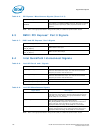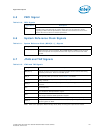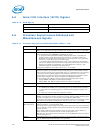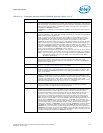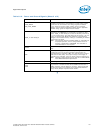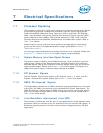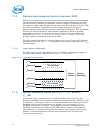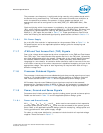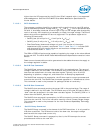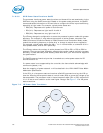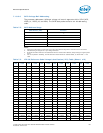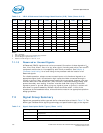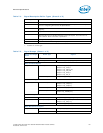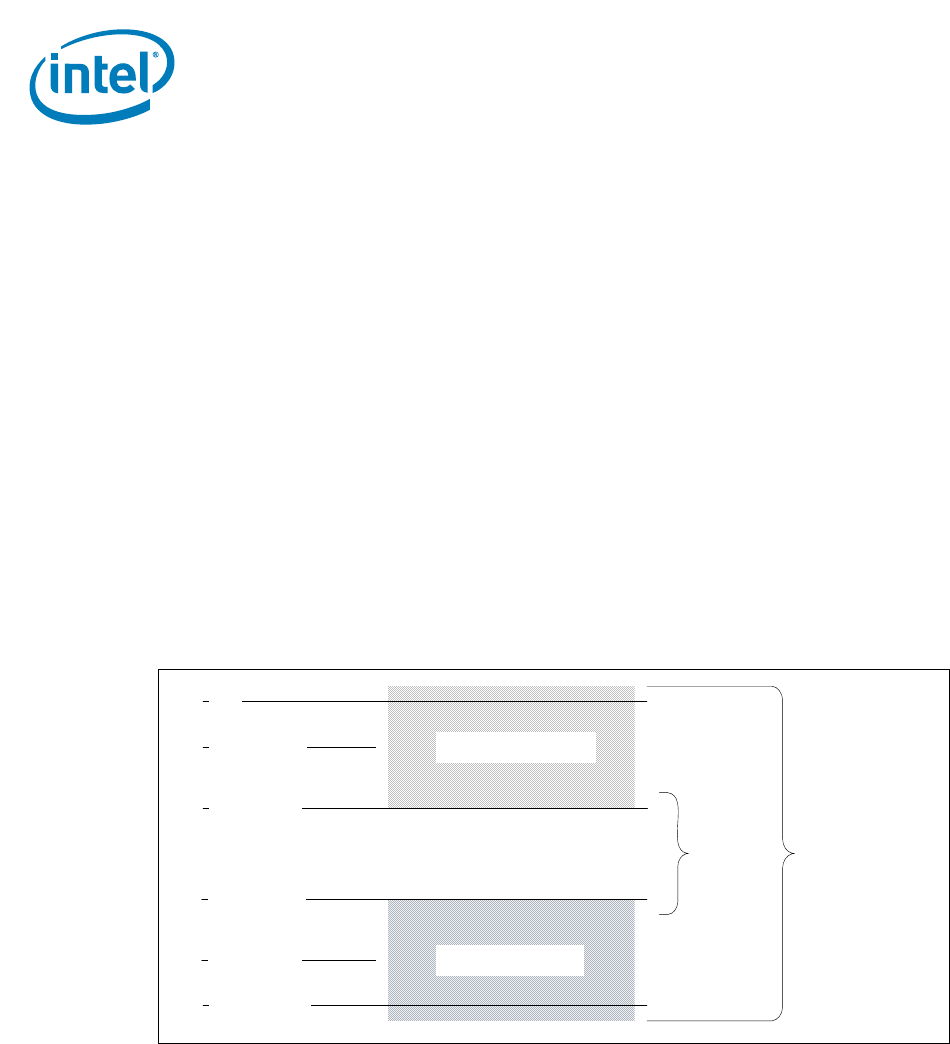
Electrical Specifications
154 Intel® Xeon® Processor E5-1600/E5-2600/E5-4600 Product Families
Datasheet Volume One
7.1.5 Platform Environmental Control Interface (PECI)
PECI is an Intel proprietary interface that provides a communication channel between
Intel processors and chipset components to external system management logic and
thermal monitoring devices. The processor contains a Digital Thermal Sensor (DTS)
that reports a relative die temperature as an offset from Thermal Control Circuit (TCC)
activation temperature. Temperature sensors located throughout the die are
implemented as analog-to-digital converters calibrated at the factory. PECI provides an
interface for external devices to read processor temperature, perform processor
manageability functions, and manage processor interface tuning and diagnostics.
Please refer to Section 2.5, “Platform Environment Control Interface (PECI)” for
processor specific implementation details for PECI.
The PECI interface operates at a nominal voltage set by V
TTD
. The set of DC electrical
specifications shown in Table 7-17 is used with devices normally operating from a V
TTD
interface supply.
7.1.5.1 Input Device Hysteresis
The PECI client and host input buffers must use a Schmitt-triggered input design for
improved noise immunity. Please refer to Figure 7-1 and Table 7-17.
7.1.6 System Reference Clocks (BCLK{0/1}_DP, BCLK{0/
1}_DN)
The processor core, processor uncore, Intel® QuickPath Interconnect link, PCI
Express* and DDR3 memory interface frequencies) are generated from BCLK{0/1}_DP
and BCLK{0/1}_DN signals. There is no direct link between core frequency and Intel
QuickPath Interconnect link frequency (for example, no core frequency to Intel
QuickPath Interconnect multiplier). The processor maximum core frequency, Intel
QuickPath Interconnect link frequency and DDR memory frequency are set during
manufacturing. It is possible to override the processor core frequency setting using
software. This permits operation at lower core frequencies than the factory set
maximum core frequency.
Figure 7-1. Input Device Hysteresis
Minimum V
P
Maximum V
P
Minimum V
N
Maximum V
N
PECI High Range
PECI Low Range
Valid Input
Signal Range
Mi ni mum
Hysteresis
V
TTD
PECI Ground



